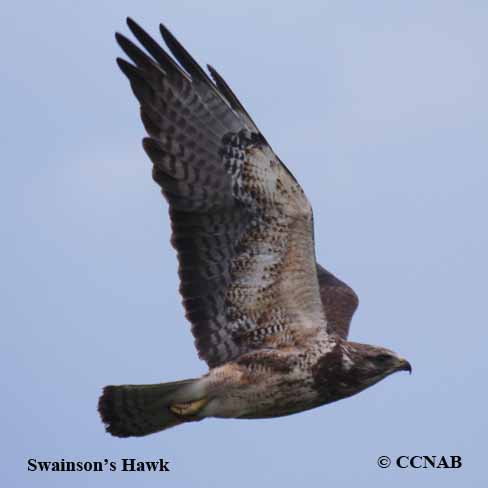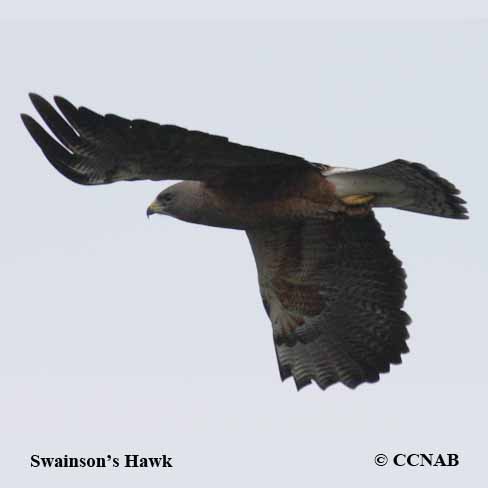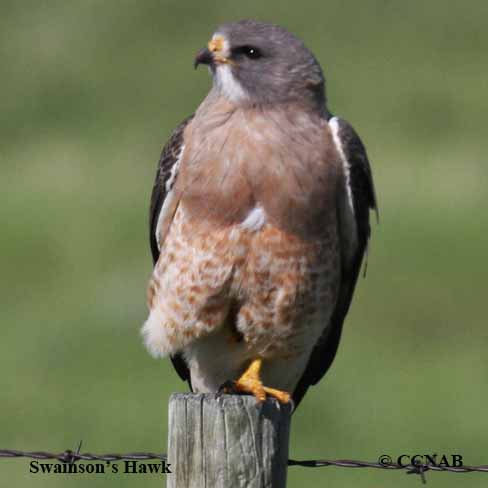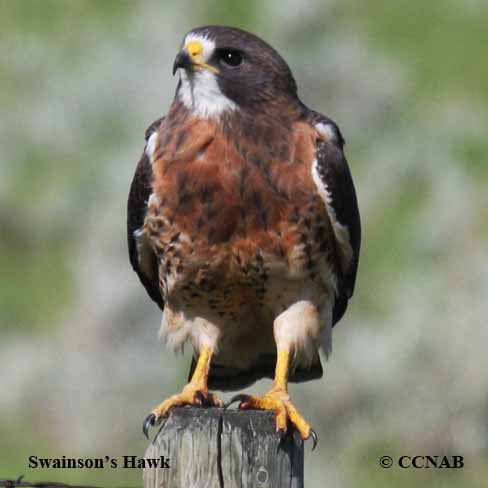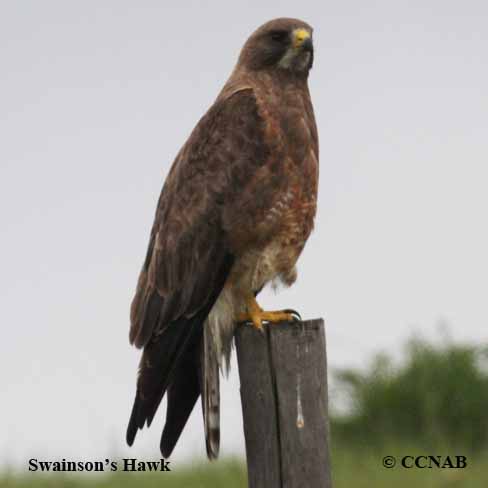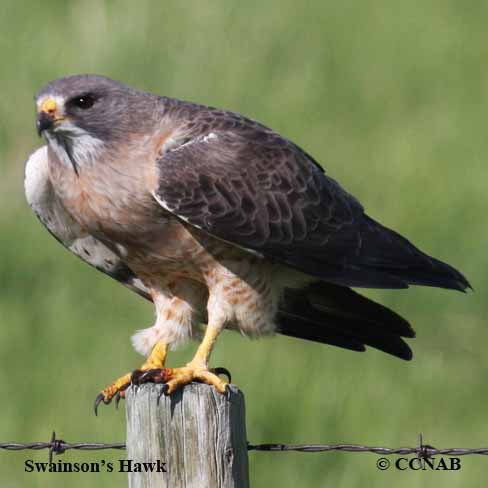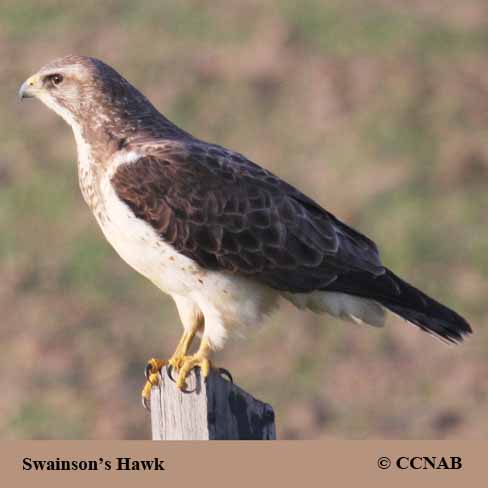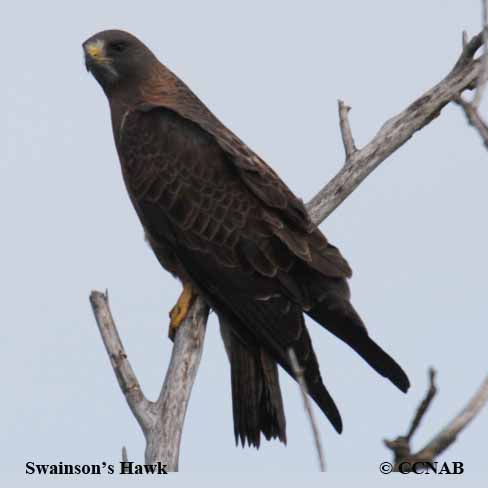North American Bird Search Box
This search box can be used to find bird species using bird's english, french or latin name, or to identify bird by its 4 letter Alpha Code
Field Guide for all the Birds of North America
Swainson's Hawk
4 Letter (english names) Alpha Code: SWHA (1)
Buse de Swainson
Buteo swainsoni
Information, images and range maps on over 1,000 birds of North America, including sub-species, vagrants, introduced birds and possibilities
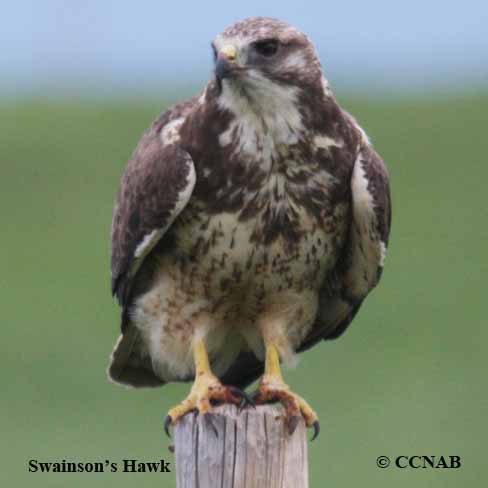
Species: The Swainson's Hawk (Buteo swainsoni), is observed on the western prairies and lesser treed regions of North America. Feeds on small animals and insects, such as ground squirrels and grasshoppers. Similar in size to the Red-tailed Hawk, but leaner with longer and pointier wings. Commonly, seen perched on fence posts along highways.
Distinctions: The male and female are similar looking, female larger in size, dark feathered head. Dichromatic in nature, seen from light coloured bodies, through shades of intermediate to dark brown bodies. Light coloured birds can be easily be distinguished from other hawk species by their dark bibs. Has one subterminal tail band with multi-small dark bands. Displays four distinguished primaries, visible when flying, wings slightly dihedral when soaring. Juveniles lighter in colour, develops mature plumage over a couple of years.
Voice: Mostly silent, may at times give a low sounding whistle.
Nesting: Two to four, multi-coloured blue, green, white and brown eggs, one brood per year. Nest is constructed in gullies or small groves of trees. Built using branches, sticks, bark and plant fibres. Reuses nest from prior years.
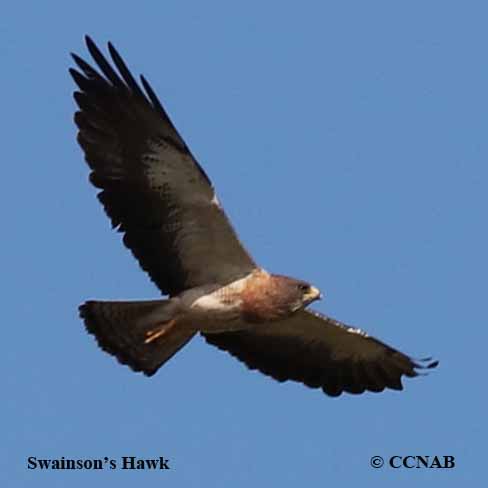
Life, Habitat and Pictures of North American Hawks
| B L | W W | W | Family | Latin Name |
|---|---|---|---|---|
| 19" 48.3cm | 51" 129.5cm | 1.9 lb 861.8g | Accipitridae | Buteo swainsoni |
North American Birds Calls
- Click here
- Summer
- Year Around
- Winter
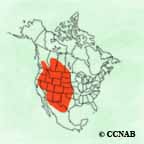
Distribution: Commonly seen throughout the mid-west prairies, from Manitoba, west to southern British Columbia, south into eastern California, east to Texas, and up through the mid-west states, including a small region in the northern parts of the Yukon Territory. Migrates into South America in the early fall, seen in migration kettles, as large as a couple thousand hawks at a time.
Reference to Other Bird Site:
ABA - American Birding Association This site represents an organization that maintains official records of all birds species that have been proven to have been seen inside the perimeters of the North American Continent and the surrounding bodies of water. Regular revised versions are posted to keep the bird list current at all times. This is the list used by all serious birders over their lifetime. You may be aware of the movie called the "Big Year". It was with this list that all the competing birders used in an attempt to set a new record as to how many bird species that could be seen by an individual birder in one calendar year.
